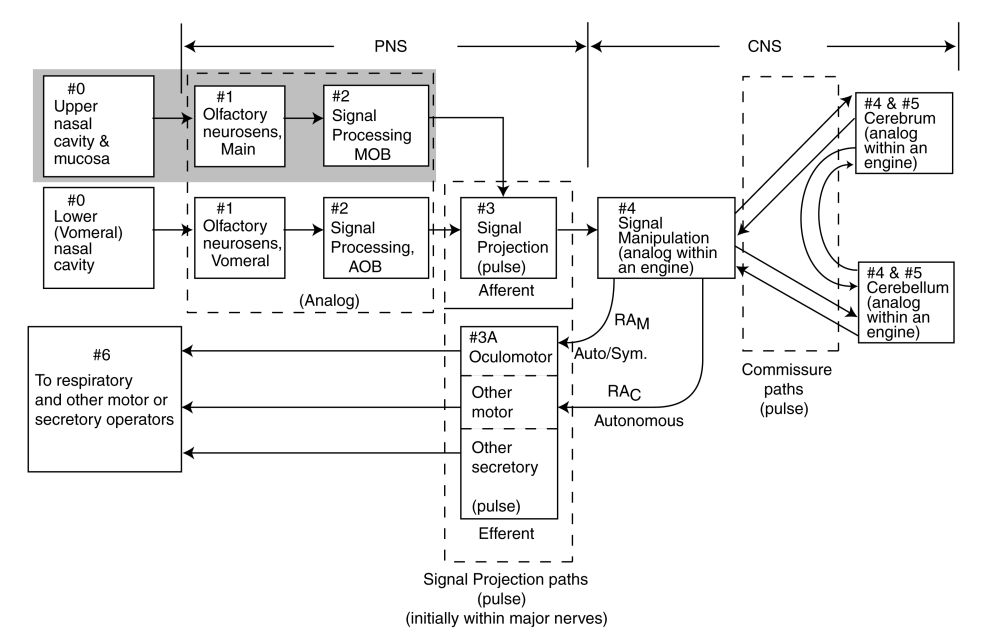

|
TOP BLOCK DIAGRAM OF OLFACTION (SMELL)
|
Last update:
Activa™: See Citation Page
The block daigram of the olfactory modality follows the standard plan of all major sensory modalities. The primary difference is the character and operation of the sensory receptors of the sensory receptor neurons (stage 1). The block diagram of olfaction shows considerable similarity to that of the auditory modality. Specifically, after considerable stage 2 signal processing, the signals project from the glomeruli of the olfactory bulb to a variety of locations within the central nervous system (CNS) and the brain stem.
While the olfactory sensing and signal processing are frequently described as part of the CNS, this is less than precise. While stages 1 and 2 of the modality are present within the cranium they are functionally major portions of the peripheral nervous system (PNS), like the similarly positioned stages of hearing.
The following figure describes the overall operation of the olfactory modality in block diagram form.

At upper left, the initial stage (stage 0) of the modality is seen to consist of two input structures located within the nasal passages, the main and vomeral channels. The main channel originates at the mucosa in the upper cavity of the nasal passages immediately adjacent to and below the main olfactory bulb within the cranium. The stage 1 sensory neurons in the mucosa pass through the cribiform plate to reach the main olfactory bulb of stage 2. While somewhat controversial in humans, mammals exhibit an auxiliary olfactory channel known as the vomeral channel. It originates in the lower nasal passages and its sensory neurons connect to an auxiliary stage 2 olfactory bulb.
The main olfactory channel processes a wide variety of signals related to all aspects of smell. The signals originate primarily from stimulation by volatile organic molecules. The auxiliary channel is believed to be more specialized and focus on more speciallized organic molecules, known as pheromones, assocatiated with identifying potential sexual partners of the same species.
The stage 1 and stage 2 circuits operate in the analog signaling mode. The signals from both channels project to the central nervous system (CNS) via stage 3 projection neurons. Stage 3 neurons employ pulse signaling to efficiently propagate signals over distances typically exceeding two millimeters.
The olfactory signals propagating from the stage 2 circuits are routed to multiple engines of the CNS and brainstem in order to support multiple phases of cognition and response. As shown in the figure, some of these paths involve modulation of the respiratory system to control air flow over the olfactory epithelium to enhance olfaction.
Return to Chemoreceptor main page